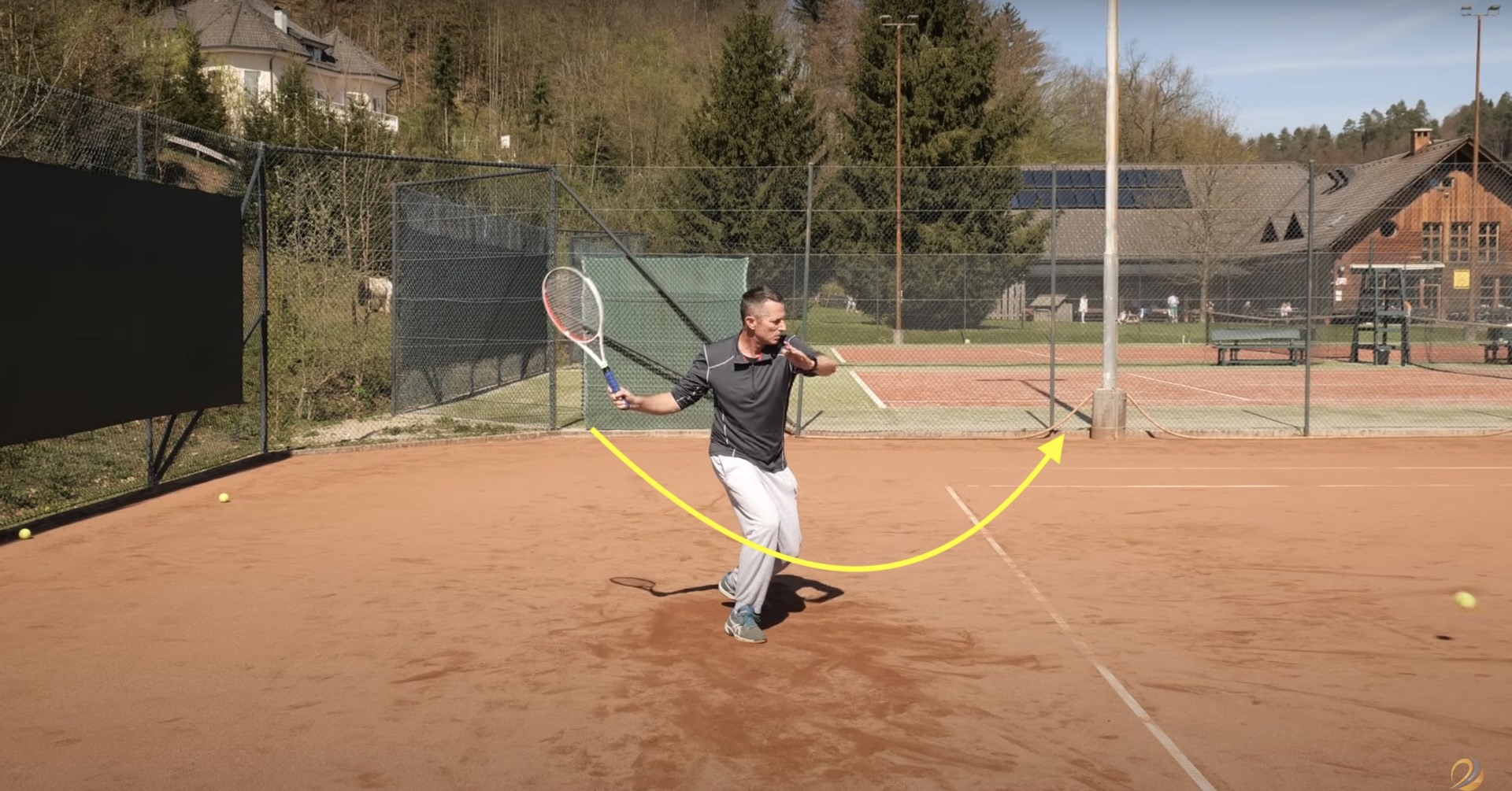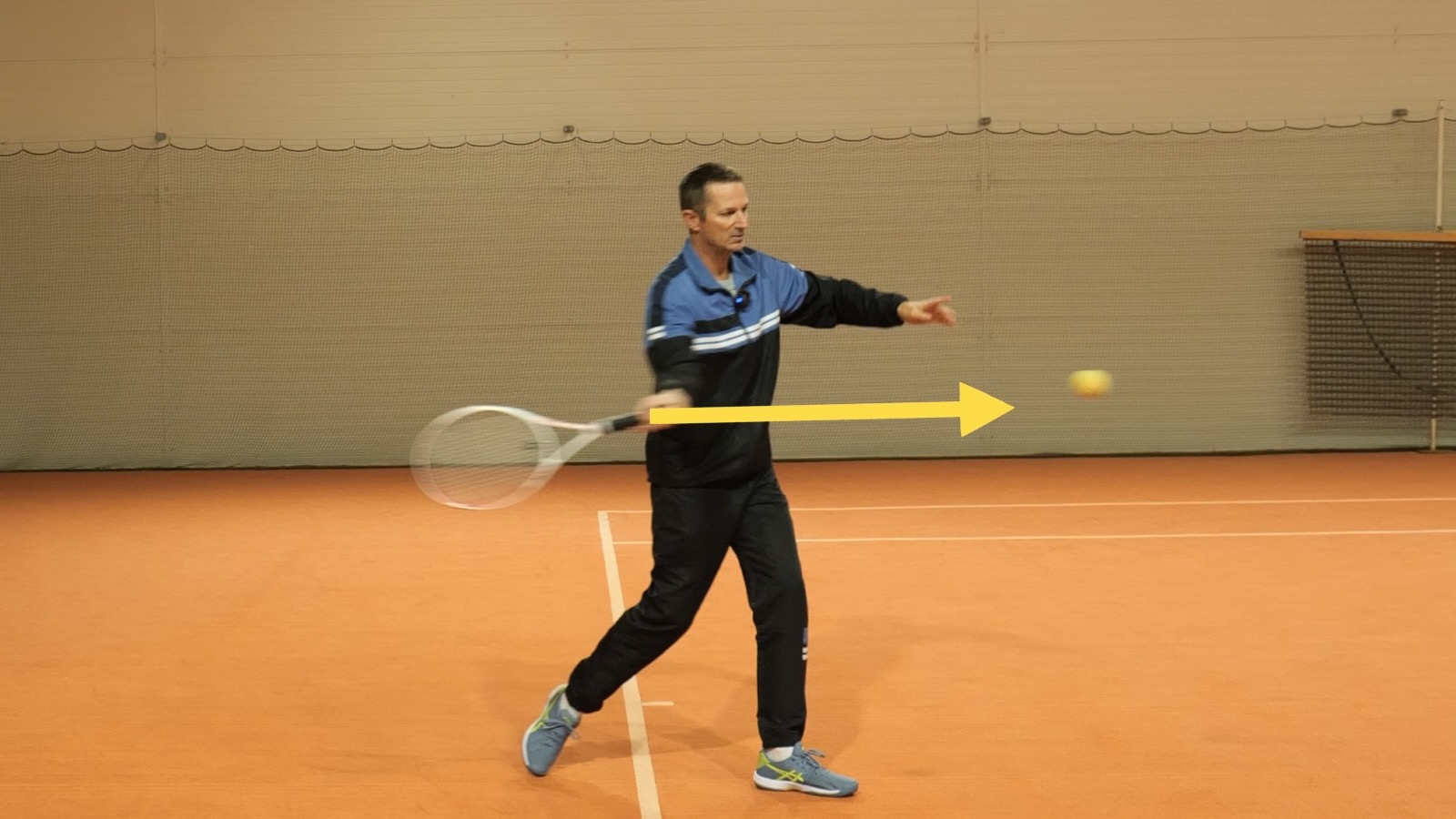In the world of tennis, one of the most frequently asked questions is, "What should my grip pressure be like for different shots?"
This question is crucial because the way you hold the racket can significantly affect your ability to execute strokes effectively.
Whether it's delivering a powerful serve, executing a drop shot, or playing precise volleys, understanding grip pressure is key to mastering these techniques.
The Importance Of Gentle Grip
Coaches often emphasize the importance of holding the racket with less tension than many players naturally employ. This advice holds true for most players.

The initial grip of the racket should be gentle but it needs to become more firm at contact.
When your grip is overly tight, it restricts the flexibility of your wrist, which is essential for executing various groundstrokes and serves.
A tight grip can also lead to a shallow ball drop during serves, resulting in weaker and less effortless shots. Essentially, excessive grip pressure limits both your power potential and your ability to finesse shots.
Tailoring Grip Pressure to Skill Level
It's important to recognize that the appropriate level of grip tightness depends on your skill level as a tennis player.
It's unrealistic to expect beginners to maintain an extremely loose grip, as this can compromise their control over the racket.
Similarly, a 3.0 level player cannot adopt the same loose grip as a 5.0 player, as the latter possesses superior skills in areas such as movement, ball judgment, timing, rhythm, ball perception, and consistently hitting in the racket's sweet spot.
To clarify the term "loose" grip, it's essential to avoid misconceptions. Holding the racket loosely does not mean it should feel loose in your hand, as this can lead to a loss of control.

If you hold the racket too loose then you'll have "holes / spaces" between the hand and the handle and that will result in poor racket head control.
Instead, aim to hold the racket more lightly or gently while maintaining a solid connection between the racket handle and your hand.
There should be no space or movement between them.
Applying Grip Pressure to Different Tennis Strokes
1. Topspin & Flat Forehand
For me, the forehand is my stronger shot, and it typically involves a lighter grip.
During warm-up or relaxed situations, my grip pressure hovers around a 2 or 3.
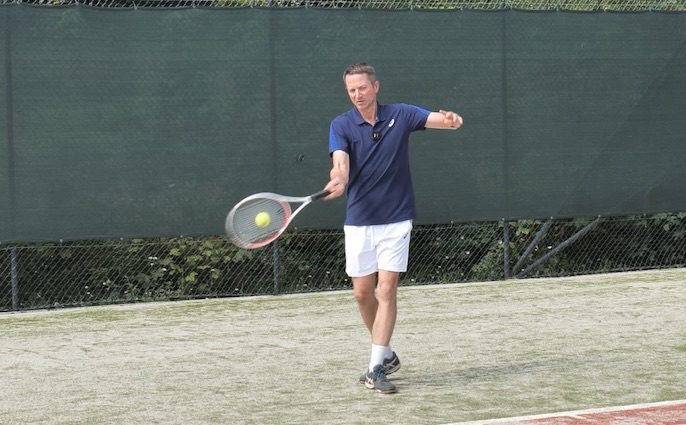
The grip pressure depends on the difficulty of the situation. This forehand is very comfortable for me and I would rate the grip pressure through contact at 3/10.
However, when faced with a trickier ball that requires more control, I may increase my grip pressure to 4 or 5.
In cases where I encounter a very low ball that demands stability and control, my grip pressure might even reach a 6.
2. Topspin & Flat Backhand
On my backhand, I generally maintain a slightly firmer grip. This is because a firmer grip helps with control, especially when dealing with balls that bounce unpredictably.
My preparation phase always starts with a grip pressure of 2, but during the stroke, I typically maintain a grip pressure of 4 or 5.

On a higher bouncing ball on the backhand I would firm up the grip pressure to around 5 or 6.
For balls that are particularly challenging, like high bounces or balls in sandy conditions, I may increase my grip pressure to ensure better control.
3. Backhand Slice
Slice shots require a level of control that surpasses what's needed for topspin shots.
Therefore, I maintain a grip pressure of 4 to 5 on slice shots to ensure precision.
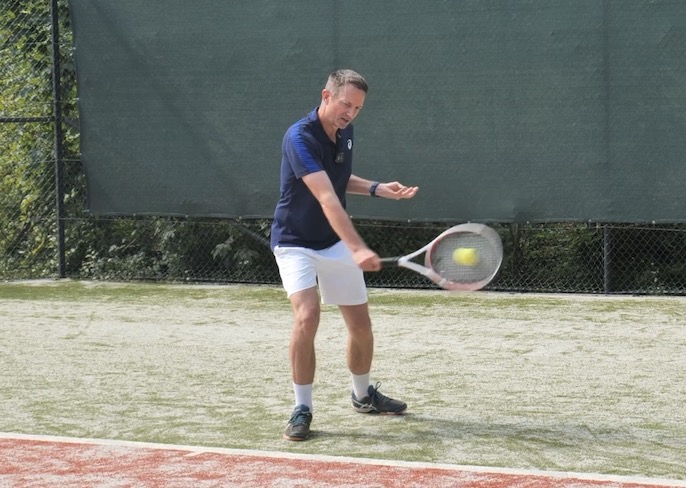
The grip pressure through contact on a backhand slice is generally a bit more firm than on the rest of the groundstrokes.
The wrist remains relatively firm to guide the racket head through the ball, preventing unwanted movement.
4. Volley
During volleys, I aim for a grip pressure of 4 to 5. It's essential to maintain control while still being able to react quickly.
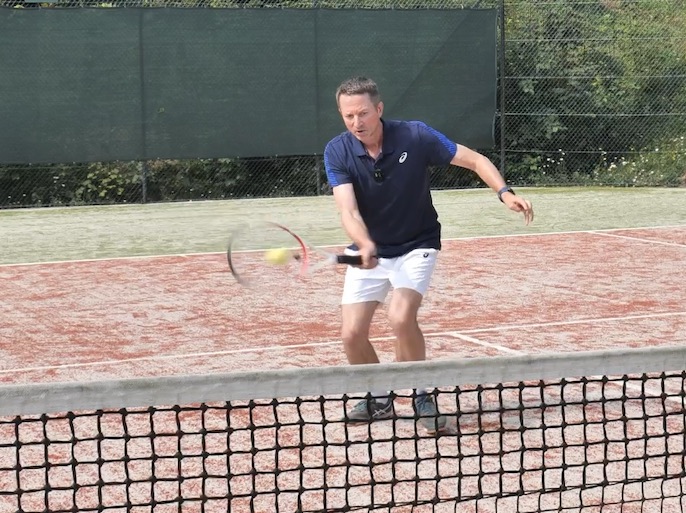
On volleys the grip pressure changes the most depending on the situation, being 3 on slower incoming balls and going all the way up to 7 or 8 for very fast shots that need very good control.
The grip pressure may vary slightly depending on the pace and height of the incoming ball.
For fast, stable balls, I might reach a 6 or 7, ensuring stability during quick volleys.
5. Smash
For smashes, my grip pressure remains relatively constant. In the preparation phase, I start with a grip pressure of 2, but at contact, it increases to about 5 or 6.
The firmer grip allows me to maintain control and direct the ball precisely, even during difficult situations when I am hitting a smash while moving backward.
6. Flat, Topspin & Slice Serve
On a flat serve I start with grip pressure 2 like for all strokes and it goes up to 4-6 levels at contact, depending on how hard I hit the ball.
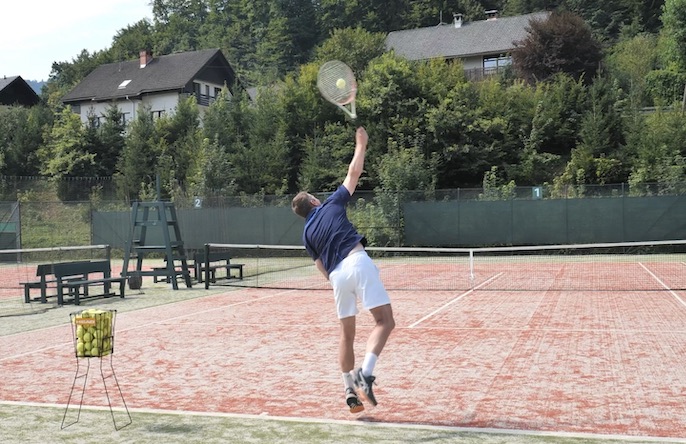
The grip pressure needs to really jump quickly from 2 to 5 or so when hitting a fast flat serve.
This firmness in grip is crucial for stability and control, especially during the demanding motions of pronation and internal shoulder rotation.
Jump over to the Myth Of The Wrist Snap video article that shows you in super slow motion whether the wrist is loose or firm through contact.
For a slice serve, my grip pressure starts at 2 and goes to around 4, and for topspin serves it goes to around level 5 at contact.
Conclusion
In summary, grip pressure in tennis is a dynamic aspect of the game that adapts to different situations and strokes.
Understanding the appropriate grip pressure for each scenario is vital for controlling the ball better in easy and more difficult situations.
So, the next time you step onto the tennis court, pay close attention to how you grip your racket and fine-tune it based on the specific demands of each stroke.
By doing so, you'll not only improve your overall performance but also gain a deeper appreciation for the intricacies of this beautiful sport.

